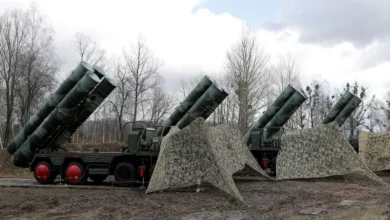Death toll rises to 14 in India’s Sikkim flooding, dozens still missing

The death toll has risen to at least 14 people after flooding in India’s northeastern state of Sikkim that came after heavy rainfall caused the glacial Lhonak lake to overflow.
At least 26 people were also injured and 102 others, including 23 army personnel, were reported missing, officials said on Thursday.The death toll has risen to at least 14 people after flooding in India’s northeastern state of Sikkim that came after heavy rainfall caused the glacial Lhonak lake to overflow.
At least 26 people were also injured and 102 others, including 23 army personnel, were reported missing, officials said on Thursday.According to a defence ministry spokesperson, search operations for the missing troops are under way.
However, the search has been hampered by the collapse of the main highway linking Sikkim to the West Bengal state and Gangtok, the capital of the northeastern state.
GT Dhungel, a member of the Sikkim Legislative Assembly, told Reuters news agency that petrol and diesel had already become scarce in Gangtok but food was easily available.
The damage was recorded more than 120km (75 miles) downstream and about 22,000 people living in the vicinity are likely to be affected, officials said.Video footage from the ANI news agency showed flood waters surging into built-up areas where several houses collapsed, army bases and other facilities were damaged and vehicles submerged.
Prime Minister Narendra Modi has promised “all possible support” for those affected.
Lhonak lake shrunk by nearly two-thirds in size, an area roughly equivalent to about 150 football pitches (105 hectares), satellite photographs released by the Indian Space Research Organisation showed.
Himalayan glaciers are melting faster than ever due to climate change, exposing communities to unpredictable and costly disasters, according to the International Centre for Integrated Mountain Development (ICIMOD) research group.
“We observe that such extreme events increase in frequency as the climate continues to warm and takes us into unknown territory,” said Miriam Jackson, a scientist specialising in ice who monitors Himalayan regions with the Nepal-based ICIMOD.
Earth’s average surface temperature has risen nearly 1.2 degrees Celsius since preindustrial times, but high-mountain regions around the world have warmed at twice that pace, climate scientists say, posing a greater risk across the wider Himalayan mountain range.
Other mountainous areas of India, as well as parts of neighbouring Pakistan and Nepal have been hit by torrential rains, flooding and landslides in recent months, killing many people.










